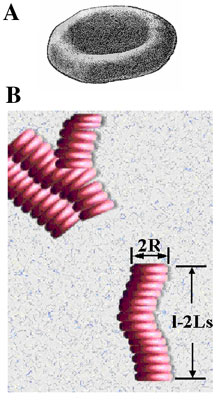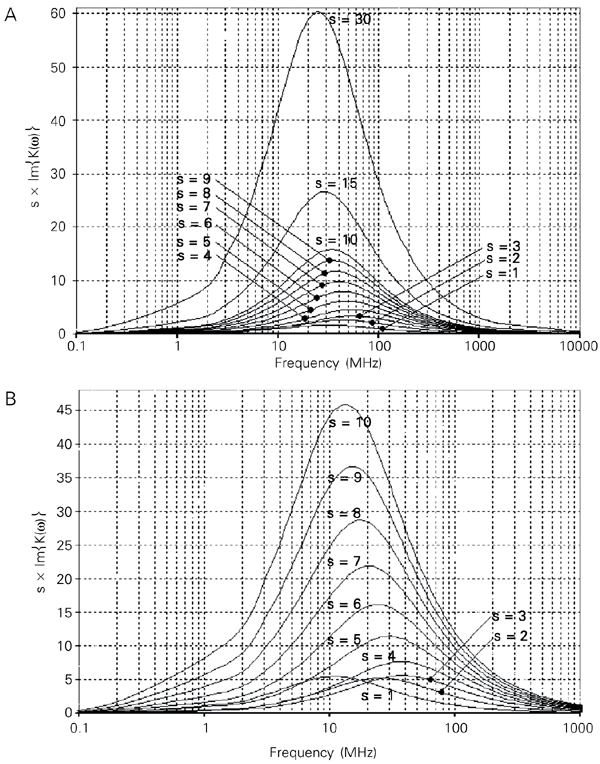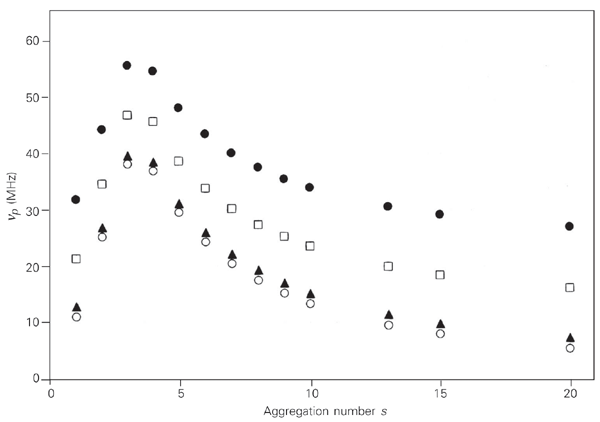Electro-rotation can be used to determine the dielectric properties of cells, as well as to observe dynamic changes in both dielectric and morphological properties. Suspended biological cells and particles respond to alternating-field polarization by moving, deforming or rotating. While in linearly polarized alternating fields the particles are oriented along their axis of highest polarizability, in circularly polarized fields the axis of lowest polarizability aligns perpendicular to the plane of field rotation. Ellipsoidal models for cells are frequently applied, which include, beside sphere-shaped cells, also the limiting cases of rods and disks. Human erythrocyte cells, due to their particular shape, hardly resemble an ellipsoid. The additional effect of rouleaux formation with different numbers of aggregations suggests a model of circular cylinders of variable length. In the present study, the induced dipole moment of short cylinders was calculated and applied to rouleaux of human erythrocytes, which move freely in a suspending conductive medium under the effect of a rotating external field. Electro-rotation torque spectra are calculated for such aggregations of different length. Both the maximum rotation speeds and the peak frequencies of the torque are found to depend clearly on the size of the rouleaux. While the rotation speed grows with rouleaux length, the field frequency nup is lowest for the largest cell aggregations where the torque shows a maximum.
Electro-rotation spectra; Induced dipole moment; Mathematical modeling; Erythrocyte aggregates












